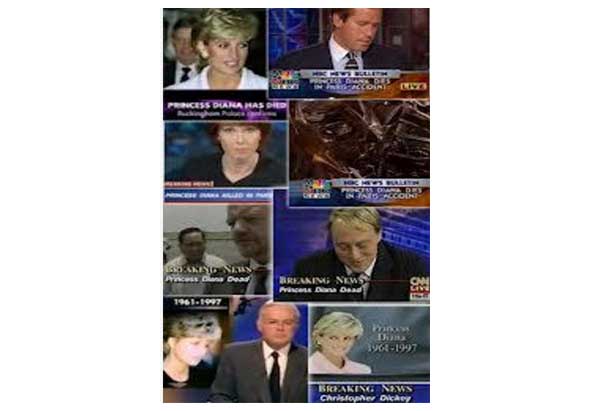
Editor’s Note – Following the spectacular allegations contained in various documentaries, that Princess Diana had been hoodwinked into giving an interview, and newspaper reports, and Channel Fours documentary that the Secret Services were a threat to her life. We republish the article in its integrity with added material by Giovanni Di Stefano, originally published in August 2012.
At 00.23 a.m. August 31st, 1997, the Mercedes, driven by Henri Paul in which Princess Diana, Dodi Al Fayed, and Trevor Rees-Jones, were travelling crashed into a pillar in the Alma tunnel in the centre of Paris, killing Paul, Dodi, and Diana, and, seriously injuring Rees Jones.
That much is for sure certain. But little else is.
Of all the articles, enquires, investigations, court cases in differing jurisdictions, statements, interrogation, no one has ever asked the most pertinent of questions.
What were the security arrangements that were put in place when Diana spent time with her children – Prince William an heir to the Throne of England- on the Al-Fayed family estate in St. Tropez and elsewhere?
It is quite understandable that the Royal Family would care little about Diana herself, but the children of Prince Charles, of course, would be a completely different attitude.
Is it at all plausible to presume that the Royal Family would be entirely reliant upon a family they and the British Government detested, to secure the lives of Prince William and Prince Harry?
Would Special Branch, MI6 and MI5 necessarily feel at ease with the security in the hands of Mohamed Al-Fayed, whilst Prince William and Harry frolicked on the French Riviera, knowing that since the fall of Communism the South of France and Monaco are controlled by the Russian mafia?
Just what would the Security Services do if Prince William or Prince Harry were kidnapped by ex-KGB agents looking for a king’s ransom?
The Royal Protection unit would surely have participated in a joint operation with the French Security Services at the very least in a discreet manner?
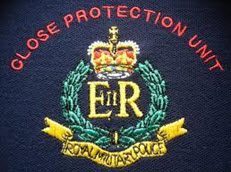
Would surveillance even in a discreet manner have necessarily continued when Prince William and Prince Harry were no longer with Diana?
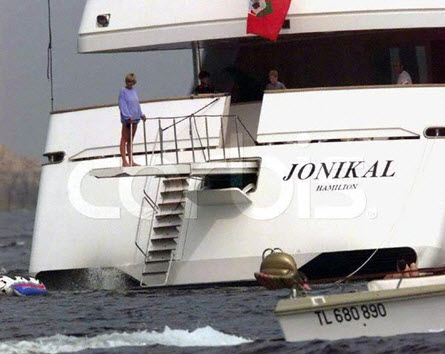
Diana, however, was quite accustomed to being spied upon, and controlled by ‘The Palace’ and not always because of her children. ‘The Palace’ wanted to know all about her, what she did, whom she met, and her movements, and for these purposes, MI5/MI6 ‘got the job.’
Long before the marriage of Prince Charles and Diana, crumbling MI6 using the friendly services of various news media outlets ‘bugged’ her phone. MI6 also knew of her ‘more than amenable’ links with various journalists. Some of those journalists regularly reported back to MI6 contents of any interviews, snippets, gossip, and ‘street intelligence’ who in turn reported back to Buckingham Palace.
In 1997, MI6 had ‘four A4 arch lever files’ intelligence on the Al-Fayed family, and David Spedding the Director-General had booked an appointment directly with HM The Queen for the 3rd September 1997 for the delivery of the files.
That appointment was not kept since events overtook the situation.
Sir David Roland Spedding died in mysterious circumstances aged 58, of what was reported to be ‘lung cancer.’ He was directly involved in spying operations in both Iraq and Serbia and had orchestrated a bright and breezy plan to assassinate Col. Gaddafi. He often quoted to his agents that ‘on instructions directly from Tony Blair’ the SAS and MI6 agents planted in Serbia were instrumental in ‘neutralizing’ many on the ‘TB’s political hit list.’
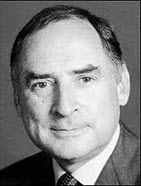 Sir David Spedding
Sir David SpeddingHis death of lung cancer, on the 3rd June 2001, two years after he ‘was retired’ was somewhat strange because he was not a known smoker – albeit a prolific talker.
However, MI6 and the other related British Security Agencies were not the only ones interested in Princess Diana. The National Security Agency (NSA) in the United States also regularly ‘spied’ on Diana and occasionally shared the information with MI6.
The NSA shared 43 classified documents with MI6 consisting of 138 foolscap pages single spaced on ‘intercepted traffic’ between Diana and various people, including, for example, the Brazilian Ambassador’s wife, Lucia Flecha de Lima.
In England, the Security Services are controlled directly by the Foreign Secretary and the Prime Minister. Robin Cook was certainly a fan of Diana, but Tony Blair ordered intrusive surveillance via the NSA in the hope that any intelligence found could be relayed to HM The Queen directly, in his weekly meetings.
Robin Cook also died in mysterious circumstances.
The history of State assassinations is well known, but what is perhaps not so common is the policy adopted by MI6 with regard to murdering ‘approved targets.’ In 1956, the then deputy director of MI6, George Young, broke the barrier when he openly advocated the murder of Colonel Nasser of Egypt simply because he had taken control of the Suez Canal and that, Young pleaded, hit British interests so that as a consequence his murder was justified.
Britain and France invaded Egypt instead to the wrath of the United States of America, who immediately froze all British/French assets held in US banks and caused a run on the pound and the fall of the British Government.
In 1960, Foreign Office official Howard Smith argued in an official memo to Dick White, the then Director-General of MI6, for the murder of Congolese leader Patrice Lumumba. The memo read: ‘I see only two possible solutions to the {Lumumba} problem. The first is the simple one of ensuring {his} removal from the scene by killing him.’
A Foreign Office colleague replied: ‘There is much to be said for eliminating Lumumba. But unless Mobutu can get him arrested and executed promptly, he’s likely to survive and continue to plague us all.’
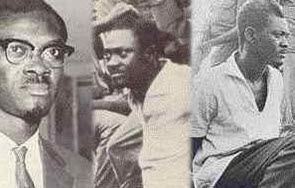
But, the final word rested with Edward Heath, Lord Privy Seal, who wanted to pursue a political solution.
MI5/6 never name anyone in internal memos, but simply accentuate the subject matter, the rest is easy for agents to decipher and understand.
Smith was later promoted to Head of MI5.
Before 1994, the law on the Security Services was somewhat vague, but the Conservative Government decided to do two things; recalling that it was MI5/6 that plotted the overthrow of Harold Wilson (with the instigation of Lord Mountbatten), and not wishing a similar fate, the government-appointed Stella Rimington as the head of the Security Services and passed the Intelligence Services Act. That made the Security Services accountable to Parliament and slightly more open.
One of the provisions of the Intelligence Services Act is to grant immunity to MI6 officers for offences/crimes committed outside Great Britain. In short, this gave MI6 agents a true ‘license to kill’.
Over the last twenty years the British Security Services, in line with many other equivalent secret service agencies, has experienced a true decline in operating standards. That has, on occasion, forced the British Government to ‘sub-contract’ state-approved murders to other agencies, mostly the CIA and Mossad.
The assassination in Belgium of the British inventor of the Iraqi ‘supergun,’ Gerald Bull, is but one case. There are many others.

In March 1990, Bull was killed outside his apartment by five shots to the back of his head. No-one heard the shots, and no-one was ever caught. Bull’s Project Babylon fell apart immediately. Bull was the engine for the whole project and had most of it in his head. Three weeks after his murder, British customs agents seized the sections of the gun barrels, which were being made in Sheffield by a forging company, who thought they were petrochemical pipes. His company, SRC, closed its offices immediately, and the personnel scattered or returned to Canada. Iraq never did get their missiles to work well
Was all his work for nought? Basically, yes. Few others have seriously pursued guns as a launch platform, although SDI has funded some gas gun work at Livermore as an anti-missile defence. Some small countries might still be interested in them as a cheap way into space, but the world now has a glut of conventional launchers. Russia is desperate to make some money for their rocket developments. A satellite in a gun launcher has severe limits on size and weight and must be able to stand tremendous acceleration. Superguns would always have been a niche launch platform. Also, the prospect of assassination like Bulls’ does not encourage researchers.
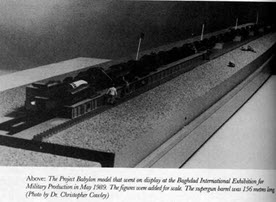
Upon his ‘retirement,’ McColl became a Director of the Scottish American Investment Company, PLC, better known as SAINTS, which invests, also, in armament companies. The Security Services in Britain, of course, call upon the SAS if, as, or when needed, and a unit of MI6 called the ‘Increment’, special forces dedicated only to the most top-secret of missions. They are not on the payroll of either MI5 or MI6 and are retired agents or ex-military intelligence, with links to organised crime or mercenary organizations. They are friends of friends who have been specially trained. They work at everyday jobs but are people upon whom the MI6 can call at any time for ‘special operations’.
Colonel Bob Denard was one such person, who on/off carried out operations for MI6 and the French Security Services. He died in 2007, taking many secrets to the grave with him. He did, however, leave notes with his sister, which are still in safe-keeping. For those that have read his meticulous scribes, whatever other secrets he took to the other world, a good few were also revealed.
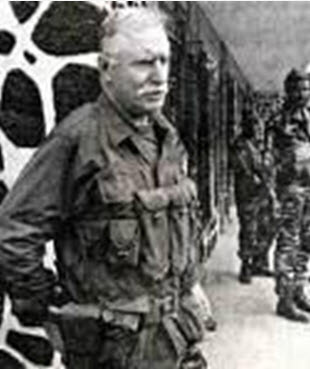
Colonel Bob Denard
In the Princess Diana situation, however, this was a completely separate issue. State assassinations in the past had always been targeted as enemies of the state, and they were obvious enemies. There was no personal vendetta. Most were foreigners and male. The only exceptions were the supposed IRA ‘lady’ murdered in Gibraltar, and possibly also Hilda Murrell, a peace activist in the 1980s.
Princess Diana was certainly none other than a ‘right not so royal pain in the neck,’ as described by Prince Philip, but killing the mother of the future King of England was another issue. Further, the family history of Diana is by far more ‘royal’ in every sense than that of the House of Windsor.
If the British Security Services were to kill Diana, they would, without a doubt, have required close and covert cooperation with the French – and MI6 has always been loathed at requesting assistance from the French security services.
Richard Tomlinson, an ex-MI6 agent, has confirmed that during his tenure he carried out a few operations on French soil, but he never told the French.
The notion that the French secret service would co-operate in the murder of Diana was simply too far-fetched. If it was to be, it had to be a solo operation.
Saturday, 30th August 1997, was a beautiful warm day in Sardinia; yet Diana and Dodi’s holiday had come to an end, and they wanted to go home. Diana wanted to go to London directly from Olbia Airport, and a provisional flight plan was filed but changed at the last minute. Since the direction for a private aircraft flying from Olbia to London necessarily overflies Paris, it was decided in mid-air that plans would change. No real explanation has been forthcoming over this quite unusual change of plan, but a private plane allows, by far, more flexibility.
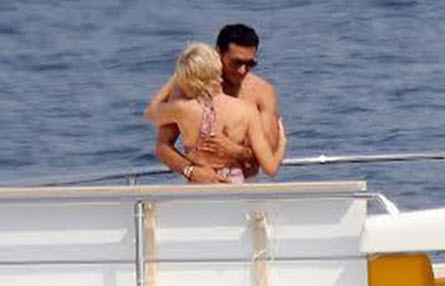
Perhaps they still wanted to enjoy one or two days in Paris together. Dodi’s father had placed his private jet at their disposal, and a short stop between destinations was, therefore, not a problem. Nor was it a problem for the Captain to amend the flight plan whilst in the air.
Diana was photographed at Olbia airport wearing beige, and there is film footage of Dodi, Diana, and the bodyguards boarding the aircraft. That 57-second segment of the jerky film was commissioned by the British Security Services as part of the generic surveillance on Diana.
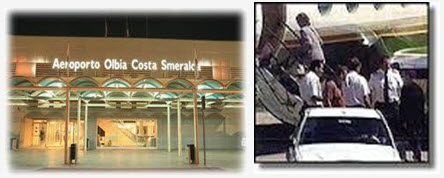
At 3.30 pm the aircraft touched down at Le Bourget airport in Paris, where a few photographers met the couple. One of the photographers was a 29-year old Fabrice Chassery, whose commission it was to take a photograph of Diana and Dodi holding hands.
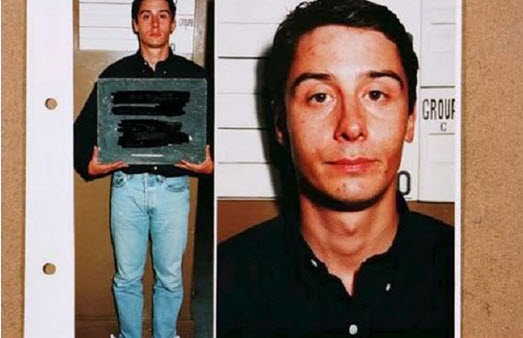
At the airport, by chance, Chassery also took photos of two French police officers who were waiting for the aircraft, albeit on very short notice, because the flight plan had been amended in the air. The French government had decreed that all VIPs announce themselves prior to landing in Paris, owing to the number of murders that were committed in the early 1990s.
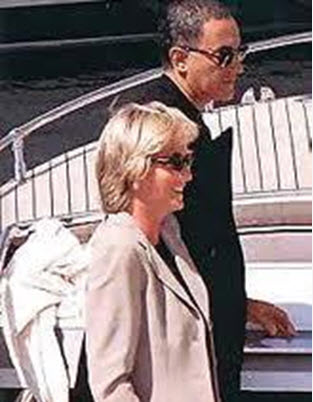
It is interesting to note that subsequently, the French Authorities denied they were placed on notice that Diana was landing, and they stated they were certainly not expecting her. A strange statement, in light of four motorcycle outriders that escorted her car until the party crossed the Boulevard Peripherique, which is the Paris ring road.
One of those to meet Diana and Dodi at the airport was a 40-year old Henri Paul. He was short and balding, he wore glasses and was the deputy head of security at the Paris Ritz Hotel owned by Dodi’s father.
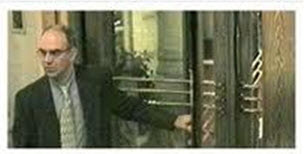
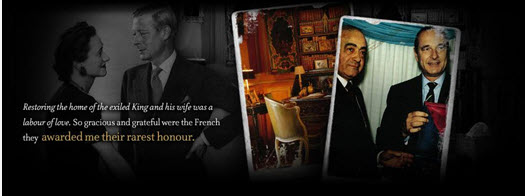
Al-Fayed did just that and spent a considerable sum. In his attempt at pleasing the British government, Al-Fayed wrote to Prince Charles offering him anything he wanted from the Villa. Charles took only a cushion with the words in German ‘Ich dien’ (I serve), the motto of the Prince of Wales.
Dodi and Diana had less than ten hours to live.
Dodi and Diana spent 33 minutes at Villa Windsor before moving on to The Ritz Hotel. The Imperial Suite was reserved for them. Intercepts from the NSA showed that Diana made two calls, one of which was to a journalist she trusted, Richard Kay, telling him that she would be making a major announcement shortly.
The announcement may have been that Diana planned to marry Dodi, that she was expecting a baby, or that she simply wanted out of the UK. The mystery was made clear at the Inquest ten years later by Richard Kay.
At the Diana Inquest, Nicholas Hilliard, for the Coroner, asked Mr Kay if Diana had said: “My destiny is to go abroad”.
Mr Kay replied: “She did, Sir, it was a frequent topic.”
Diana wanted to get away from the paparazzi and she also commented: “that the British people must be sick of seeing me in the papers,” the jury heard.
Harrods boss, Mohamed al-Fayed, may also have been poised to help make her dreams of opening up a hospice network – to be called The Diana Hospices – become a reality.
Mr Kay told the central London inquest: “She told me that she was discussing with Mr al-Fayed Snr the possibility of setting up some sort of worldwide hospice network, which she indicated he would be prepared to financially underwrite.”

Of the hospices project, Richard Horwell QC, for the Metropolitan Police, said: “It was going to be such an important development in her life that she was going to take on no more royal engagements after the end of 1997.”Mr Kay said: “That’s what she told me.” Mr Horwell continued: “And, she was going to thereafter devote her life to the Diana Hospices?”
Mr Kay answered: “Things that she wanted to do rather than what other people wanted to do. It was to be a very major announcement.”Diana’s high-profile support of anti-landmine campaigns, including a much-publicised trip to Angola, had boosted awareness of the issue internationally. Her approach may have clashed with government policy and the new Labour government at the time may have moved towards signing up towards opposing the devices, the court heard.
Of Diana’s on-going landmine work, Mr Kay said: “As I understand it, she wanted to visit south-east Asia and, having done that, she felt she would have been to the most significant landmine zones in the world, and she could have drawn a line under that aspect of her life. Diana, who had dispensed with royal protection in 1993, had only made “the odd light-hearted remark” to suggest she feared for her safety,” according to Mr Kay.
The fact she had ‘dispensed’ with royal protection was no certainty that she was not under surveillance, and Diana knew that only too well.
From the Imperial Suite of the Ritz Hotel Paris, the couple went to No.1 rue Arsene-Houssaye in the centre of Paris, where Dodi had a plush apartment with a huge sofa and state of the art marble bathroom.
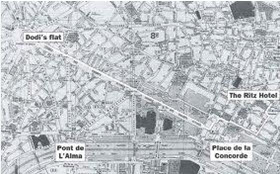
There was, of course, the usual ‘trouble’ with photographers but nothing so serious, even though a security officer at the apartment jostled with a member of the press. It was all part of the usual scenes that followed Diana.
A note in the MI6 file records that Diana understood it was not a good idea to be ill-treating the media, and she sent out a member of staff to apologise.
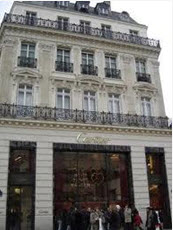
Fabrice Chassery spoke to a person – now known to have been an MI6 operative – saying that this whole incident showed that Diana was ‘not hostile towards the press.’
At about 8 pm Dodi and Diana went ‘shopping’ and entered the Repossi jewellery store, where a ring was ‘purchased’ for some £11,600 value and a receipt issued, dated August 30, 1997, with the words “bague fiancaille” – French for an engagement ring.
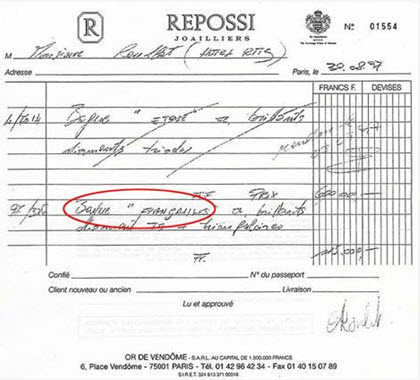
Claude Roulet, assistant to the Ritz President, Franz Klein, walked across and joined Dodi inside the jewellers. Dodi, relaxed and casually dressed in a dark jacket, T-shirt and dark jeans, is seen on ‘security footage’ being greeted by Alberto Repossi, his wife Angela, their press officer Alice Valentine and three other assistants, who closed the shop for the visit.
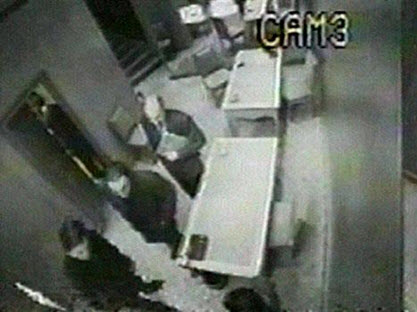
For ten minutes he is seen pointing at, and inspecting several trays of jewellery although it is impossible to see what he goes for.
Then, Mr Repossi enters the office where the store’s safe is kept and hands Dodi a brochure for the Dis-Moi Oui range before Dodi leaves the store at 5.50 pm.
Minutes later, CCTV cameras in the Ritz follow Dodi bounding up the hotel stairwell – two steps at a time – and returning to the suite he shared with Diana, clutching the brochure.
At the same time, Mr Roulet is seen at the jewellery store apparently making notes on Dodi’s choices before returning to the hotel at 5.56 pm.
Mr Roulet is then recorded on the Ritz CCTV going to Dodi and Diana’s three-room suite, on the first floor, where he spends four minutes before walking back to Repossi’s at 6.27 pm.
There, Mr Roulet is shown clearly making a sign with his wrist to indicate a ring and a bracelet.
Mrs Repossi is also seen emerging from a back room with an item of jewellery which she put on her left hand.
Shortly afterwards, Mr Roulet is seen picking up the same brochure and a bag, without handing over any money or credit cards to the jeweller. Twelve minutes later, he returns smiling, carrying a bag in his left hand. He writes a brief note at the cashier’s desk, a series of numbers – 115,000 – on the note was the undiscounted price in French francs for a ‘Dis-Moi oui’ ring. Mr Roulet then goes up to Diana and Dodi’s suite at 6.43 pm.
After spending three minutes with Dodi in Room 101, Mr Roulet then comes back to the cashier, signs another form and the Repossi bag is stored in the Ritz strong-room.
All this and Diana knew nothing. The question, of course, is why go back to Repossi because, when they did, Diana did not enter. In fact, they drove to the Champs-Elysees, where tourists surrounded them when they tried to get out, and since there was no special or any protection for them, they remained in the car. They then went back to Dodi’s apartment.
So why did Dodi take Diana to the store?
One of the secrets that have been denied by the French and British Government but known to MI6, and contained in the ‘Diana file’ is that cocaine was found in the Mercedes car that subsequently was to be the cause of death of a princess.
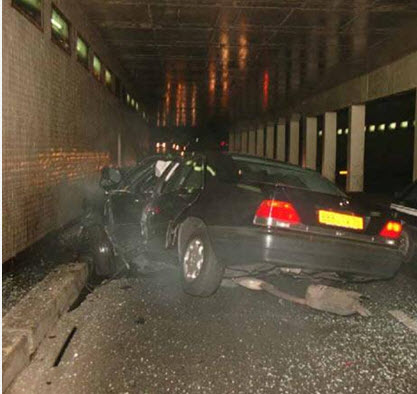
It is interesting to note that apart from the death of Princess Diana in 1997, the only other suspicious car crash – involving a Mercedes like the one driven by Henri Paul – was the fatal car crash that killed the veteran Czechoslovak politician, Alexander Dubcek, in 1992.
In 1999, Jaroslav Volf, the former head of Dubcek’s Social Democratic Party (SDS), was quoted as saying that: “too many questions remain unanswered.” As Czechoslovakia broke up, Dubcek began to appear the most logical choice to become the first President of an independent Slovakia.
However, on 1st September 1992, Dubcek’s chauffeur-driven Mercedes skidded off the Bratislava-Prague highway in heavy rain. Dubcek said later in hospital that he had sensed something was wrong and had lain down on the rear seat of the car well before the crash.
His driver suffered minor injuries, but for some unexplained reason, Dubcek was found lying 20 meters in front of the car – it was presumed that he had been catapulted out of the rear window, as the car spun out of control. Like in the Diana crash, no attempt was made to preserve the forensic evidence – the Mercedes was destroyed following an ‘examination’ by investigators.
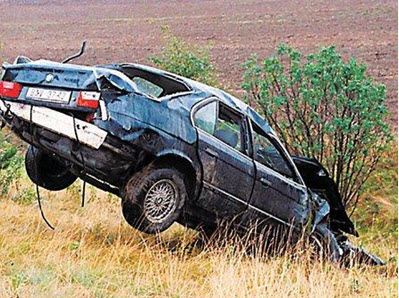
There is no doubt from the files found at MI6 headquarters that the STB (State National Security), in a joint operation with the then KGB, eliminated Dubcek. The files on Dubcek confirm, for example, that ‘the driver of Dubcek’s BMW was a man called ‘Jaroslav Reznik’ who was a former driver of a man called Cimo, who at the orders of Meciar raided Tiso’s villa in Trencin and transported several members of the STB (State’s National Security).’
Reznik, at his interrogation, never mentioned a car pushing him off the road, nor that he had lost complete control of the vehicle. He simply stated that the road was wet and he just skidded.
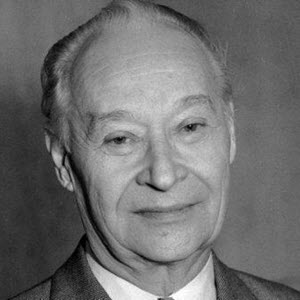 Alexander Dubcek
Alexander Dubcek
What made the ‘accident’ really suspicious was the fact that Dubcek’s briefcase went missing, containing documented evidence against the Soviet Communist Party. At the time Boris Yeltsin wanted to ban the Communist Party and for that, he needed to prove that they had been involved in criminal activity. Dubcek was one of the witnesses to testify at the trial, although he wasn’t the only key witness.
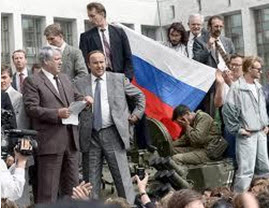
The briefcase was recovered in a ‘favour operation’ mounted by MI6 and handed to Yeltsin, which led to close co-operation between Britain and Russia.
A witness who did testify, ex-Polish Premier Piotr Jarozewicz, was also found dead in unusual circumstances – shot and murdered along with his wife Alicja in their home in Anin near Warsaw. It’s said that the fate of his first wife, along with his daughter, is also still unknown. The documented evidence he possessed has never been found. No trial ever took place.
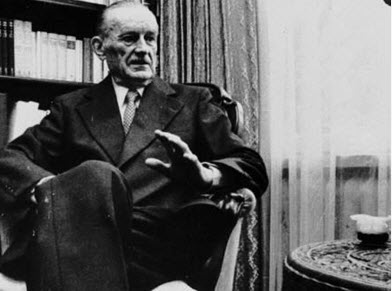
Piotr Jarozewicz
Relations between Britain and Russia have never been as good as when Yeltsin was Premier. MI6 was almost an extension of the KGB, and vice-versa. During that period, many joint operations were carried out.
All that, however, would change when Diana and Dodi were killed.
MI6 are renowned for ‘State-Sponsored Specialities’ (SSS as they are referred to) via ‘accidents’, the favoured method being a vehicular homicide.
In 1992, MI6 agent Richard Tomlinson confirmed that Serbian President Slobodan Milosevic was the subject of an SSS via a fake car accident whilst in Geneva.
David Shayler, another MI6 agent, said they failed in their attempt to kill Libyan leader Colonel Muammar Gaddafi – but the car bomb they used killed scores of Libyan civilians. (Gaddafi, who survived at least three attempts made on his life by western intelligence services, was also the only leader of a country to openly speculate that MI6 had killed Diana).

Successive British governments have sought to keep from both the British Parliament and the British people any details of MI6 assassination attempts, against foreign leaders, hence the hysteria of the then Blair government towards both Tomlinson and Shayler.
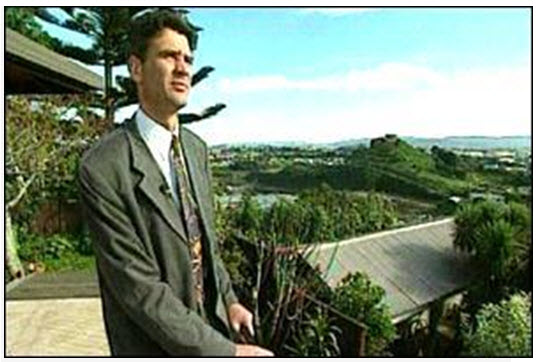
The Tomlinson revelations are very significant, as he has specifically claimed that MI6 planned to kill Slobodan Milosevic, then President of the Yugoslav Republic of Serbia, by:‘Disorientating (his) chauffeur using a blinding strobe light as (his car) passed through one of Geneva’s road tunnels.’
Once that plan was revealed in 1992, MI6 had a complete rethink on its dealing with Serbia and the President. An MI6 agent infiltrated the highest level of commerce, organized crime, and politics ensuring loss of life was minimal but ‘Project Serbia’, an initiative between Germany and Britain, would be brought to a successful conclusion. The CIA tried to infiltrate agents during 1993-1995 but found a hard-core wall established by the MI6 agent, ensuring no other agency could interfere.
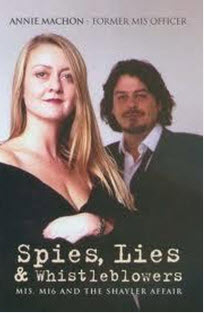
If it’s true that MI6 planned to kill Milosevic in such a way, then it proves they certainly had the means and capability to organise the crash that killed Princess Diana. There have also been a number of suspicious deaths caused by car crashes of people working in the defence industry in Britain during the 1980s.
However, if it was foul play, then a number of people would have been involved:
-
A car was used to block the route of the Mercedes thus forcing it onto the road that leads to the tunnel at the Point d’Alma, as witnessed by Thierry H
-
At least one of the paparazzi on a fast motorbike chasing the Mercedes was working for MI6
-
At least two cars may have been involved in causing the crash (one may have carried personnel that used a strobe light to blind the driver Ms Brenda Wells; another may have used some kind of electronic interference device that seized up the electronics of the car (potentially up to four people).
-
Witnesses saw a helicopter above just before the crash – was it monitoring events on the ground and relaying them back to a control centre (the British Embassy where up to six MI6 officers were stationed over that weekend);
-
Who was the motorcyclist who forced Ms Wells off the road? Who were the two people seen near the Mercedes seconds after the crash, and before the paparazzi and stunned onlookers reached the scene?
The witness known as Thierry H. claimed he saw a car driven by paparazzi blocking Diana’s Mercedes exit from a road which would have avoided the route through the Point d’Alma tunnel (although it is unclear how he knew that they were paparazzi). He had been driving in the right lane of the express road near the Alexander III Bridge, approximately 800 meters before the Alma tunnel. He says he was:
“Passed by a vehicle moving at a very high speed. I estimated its speed at about 75 mph to 80 mph. It was a powerful black car, I think a Mercedes… This car was clearly being pursued by several motorcycles, I would say four to six of them. Some were mounted by two riders. These motorcycles were tailing the vehicle and some tried to pull up alongside it.”
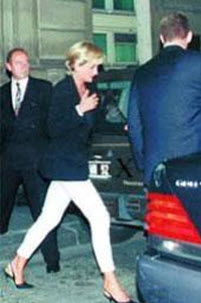
In 1997, it was reported that the whereabouts of a British secretary from London driving in the tunnel at the time of Diana’s crash were ‘shrouded in mystery.’ It was claimed that she had ‘disappeared’ from her flat in Champigny Sur Marne shortly after giving her statement to the French police after she and her husband had been told to go into hiding, and not to speak about what she had seen. Londoner Brenda Wells, 40, had told police how she was forced off the road by a motorbike following Diana’s Mercedes at high speed. She also saw a dark-coloured car – possibly Fiat Uno – and in her statement she claims:
“After a party with my friends, I was returning to my home. A motorbike with two men forced me off the road. It was following a big car. Afterwards, in the tunnel, there were very strong lights like flashes. After that, a black car arrived. The big car had come off the road. I stopped and five or six motorbikes arrived and started taking photographs.
During the 1990s, MI6 is alleged to have been involved in two attempts to kill leaders of foreign governments: President Milosevic of the Yugoslav Republic of Serbia in 1992, and Libya’s leader, Colonel Muammar Gaddafi, in 1996. Although it appears that the initial attempt to kill Milosevic was abandoned, during NATO’s air campaign against Yugoslavia in 1999 a second attempt was made to kill him and his family when his house was hit by missiles from US bombers. Like Milosevic, Gaddafi was lucky – in 1986, US bombers flew from Britain to kill Gaddafi and his family – they failed, but 55 civilians in Tripoli, along with one of his daughter died in the attack.

In 1998, news broke with claims that MI6, had tried to assassinate Gaddafi, in 1996. MI6 had deposited $160,000 to an underground Islamic Fundamentalist Group in Libya to assassinate him. Libyan extremists planted a large bomb in February 1996, on a road along which the Libyan leader’s motorcade was to travel. The bomb detonated under the wrong vehicle. Six bystanders, government officials and security personnel were killed. Gaddafi escaped unharmed.
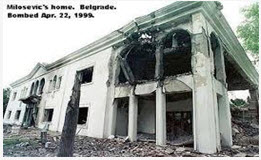
The way MI6 planned to kill Milosevic in 1992, was the same way as Princess Diana died in 1997. NATO bombers made another attempt to kill him in 1999 when his residence was bombed, and in the same year, but the MI6 agent in Belgrade – having received information from NATO Headquarters in Belgium – forewarned Milosevic, saving his life.
An MI6 officer colleague of Tomlinson brokered a deal after reporting to the Director-General that ‘Tomlinson posed no further threat owing to his mental state,’ allowing his return to England. In 2009 MI6 agreed to let him return to Britain, unfroze royalties from his book and dropped the threat of charges. MI6 also apologised for their unfair treatment of him. To date, he poses no further threat, or revealed any further covert operations.
He lives the life of a recluse, but wanting for nothing.
In 1998, however, he wrote two letters to his lawyer, which told an important story relevant to the death of Diana.
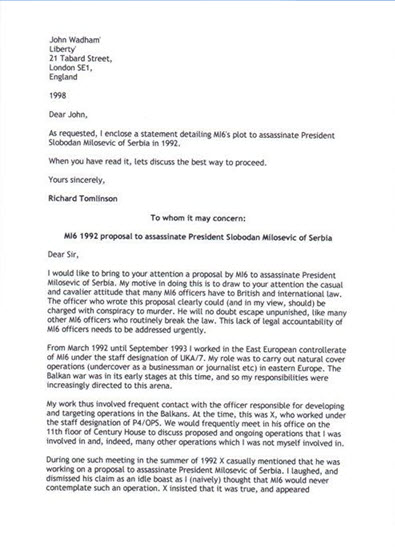

Tomlinson served in MI6 from 1991 until April 1995 in Eastern Europe, Russia, the Middle East and Bosnia. He was sacked in 1995 when personnel manager Clayden claimed he ‘was not a team player, lacked judgment and was not committed to the service’ (ST960331) which was contested by other officers, including his boss. In 1996 he tried to take MI6 to an employment tribunal; this was initially refused by the government but months later the ban was lifted (TM960724) by Foreign Secretary Rifkind.
By his account of events, Tomlinson did not act of his own volition in his subsequent actions against his former employers. He says, “I joined the service for reasons of patriotism. I desperately want my job back.” His subsequent disclosures appear to be in retaliation for the shabby treatment he received on leaving SIS.
His reintegration and ‘neutered’ position make his version of events vital to the death of Diana.
The history of MI6 is relevant to the death of Princess Diana. The leading recruiter for MI6 remains “Professor Pritchard of Gonville and Caius College Cambridge. He identifies and recruits the most intellectual geniuses for MI6.” He is a Life Fellow of Gonville and Caius College and an expert in the law. Co-author of Hale and Fleetwood on Admiralty Jurisdiction (1993) his ability to interpret and create law for the Government makes him invaluable.
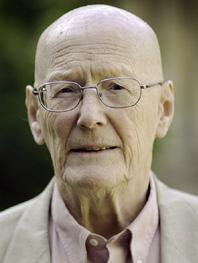
In 1997 a number of MI6 agents were sent to Paris between 15th July and 3rd September 1997.
Richard David Spearman-Chief of staff for Sir David Spedding-. He was given an assignment and moved to Paris two weeks prior to the death of Diana, Princess and her friend Dodi Al-Fayed.
Nicholas John Andrew Langman– principal assistant to Richard Spearman was moved to Paris and even stayed at the Ritz Hotel.
Richard Billing Dearlove – the incoming Head of MI6 in September 1999- was in Paris two weeks before the 31st August 1997 crash.
Sir David Spedding -Head of MI6 attended a function at the British Embassy on the 29th August 1997. He was not seen at MI6 Headquarters until 5th September 1997.
SAS Major Glynn Evans was spotted at a bar near the Ritz Hotel on the 30th August 1997.
John Riddle responsible for Eastern European ‘business’ was in Paris between 27th August and 2nd September 1997.
Andrew Whiteside MI6 agent in Hungary flew to Paris on 28th August 1997.
John Venning and Mike ‘Mad Mike’ Thompson arrived in Paris on 29th August 1997.
A Sunday Times journalist who is now deceased and was operational in Belgrade between 1993-1999 working for MI6 was also in Paris between August 28th and 3rd September 1997.
Diana and Dodi would not have had a clue about the MI6 activity. Dodi had booked a table at the Chez Benoit restaurant for 9.30 that evening.
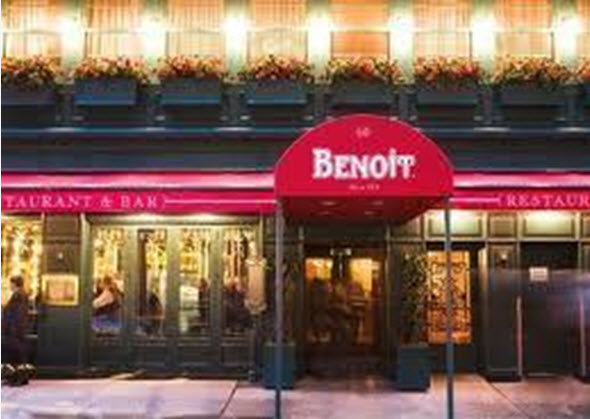
Dodi and Diana were supposed to meet three other ‘guests’ but because of a telephone call, Dodi received he changed his mind. NSA intercepts maintained by the now heavily sealed ‘Diana’ file at MI6 show that Dodi called Claude Roulet the assistant Director of The Ritz Hotel to find out or to ‘send someone’ to see if photographers were at the Chez Benoit.
Roulet, according to the intercepts, reported back to Dodi that many media were there, Dodi cancelled the reservation.
Dodi and Diana returned to The Ritz and their entrance through the swing doors evidenced they were quite composed.
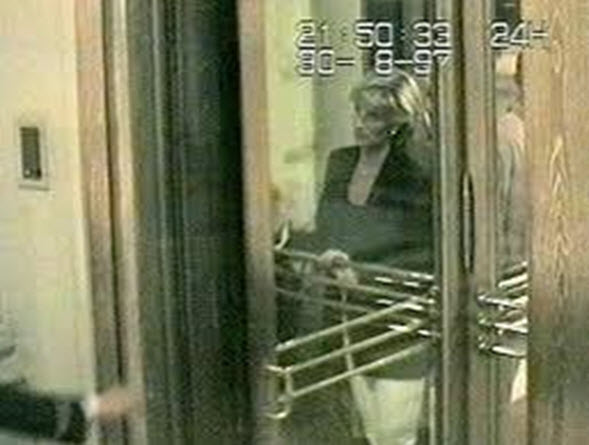
Dodi and Diana ate at the Espadon Restaurant within the Ritz Hotel.
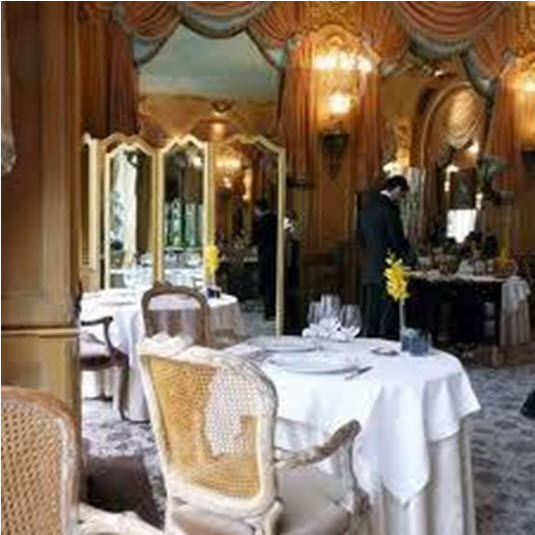
According to a report by an MI6 officer, dining also at a table nearby, Diana ate sole and Dodi turbot. There was, of course, no bill and nothing to sign.
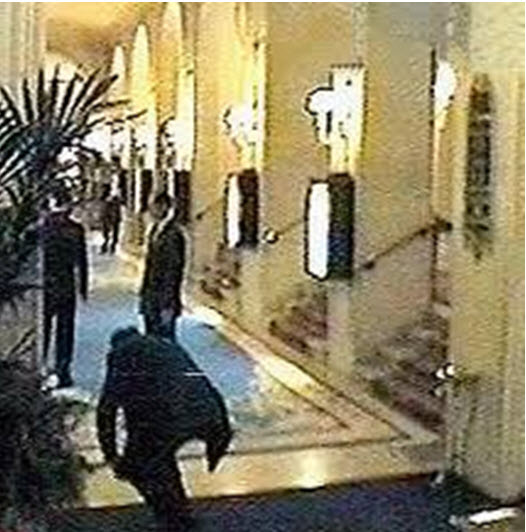
Rees Jones, the bodyguard, watched them go upstairs to the Imperial Suite. Of course, no-one knew whether or not they would stay in the suite or go out again. It was by now 11.00 pm. It had been a full day.
To all intents and purposes, the happy couple would have remained there until the morning, but then the unexpected happened.
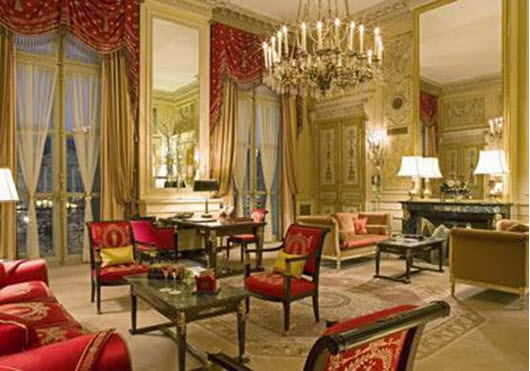
Dodi took a phone call which would change the destiny of two families.
The Ritz Hotel in Paris was a forerunner for in-house security and CCTV was everywhere, including some of the suites. Camera C46 monitored who came in and out of the Imperial Suite. Just before Dodi received the fated telephone call at 10.59 pm a maître wheeled in a bottle of champagne. The bodyguards were outside. One hour later Henri Paul conveyed a message to Dodi that changed his fate.
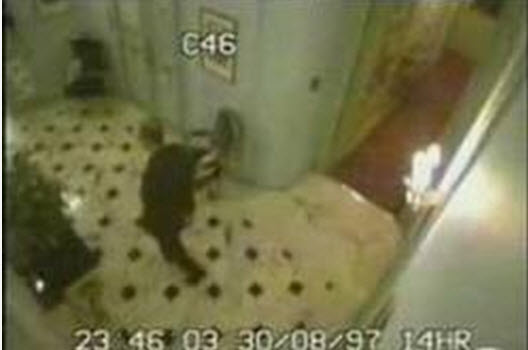
At 9.53 pm Henri Paul returned to the hotel and CCTV monitors him parking the car. He enters the Ritz Hotel at 10.09 pm through the front door.
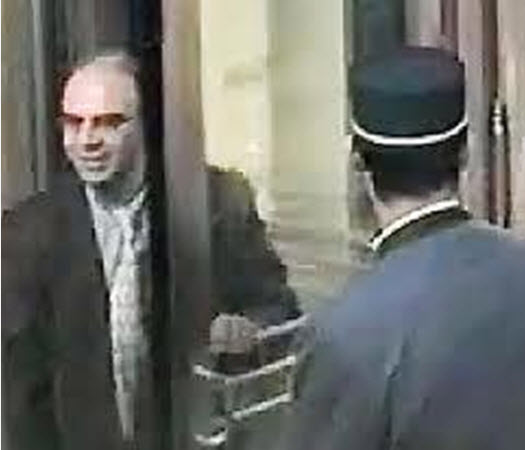
Why Henri Paul came back has been the subject of some speculation. Did Dodi call him to come back or did he just come back of his own volition, knowing that his ‘boss’ may require his services?
Information gleaned from the MI6 files, shows that at 9.23 pm Dodi called Henri Paul to come back to the Ritz with some white powder that Dodi had become dependent upon.
Diana knew that Dodi used cocaine and, although it was offered to her, she refused. In the short time they were together Diana desperately tried to wean off Dodi from drugs and even threatened to talk to his father. Dodi was afraid of his father and promised Diana that he would not use drugs again. Breaking that promise would invariably be a factor in the cause of his death. He was excited about this evening and he was of the belief that Diana was ready for a full official relationship with him. That evening he needed cocaine and Henri Paul was the answer, as he had always been in the past.
According to intercepts from NSA, the only reason Dodi suggested moving from the comforts of the Ritz Hotel and the glorious Imperial Suite to his apartment was in order to see Henri Paul and take delivery of a few lines of cocaine.
The two normal drivers, Jean Francois Musa and Philippe Dourneau, would not be used to drive Dodi and Diana to the apartment because it was Henri Paul that carried the precious cargo Dodi craved for that evening.
At 11.56 pm, Dodi called his father and told him he was moving from the Ritz to his apartment at the rue Arsene-Houssaye. He told his father he had a gift for Diana and champagne and did not feel comfortable in the Imperial Suite. “It’s not mine” the transcript records. Mohamed Al-Fayed replies “It’s dangerous to move, just stay there.” Dodi replied, “I’ll think it over and talk to Diana.”
Dodi was a playboy and did not have such a good relationship with his father. He always felt his father had achieved so much more, and there was an element of envy. The relationship was never easy, but Mohamed always tried to compensate Dodi for the lack of family life by allowing his every wish. ‘Cheque book generosity,’ Al-Fayed often said.
Dodi had to convince both his father and Diana, as to why they should leave the Ritz Hotel and move to an apartment, nowhere near the glamour of the Imperial Suite.
Dodi could not take his father’s advice because Henri Paul was carrying the much-needed cargo he needed for the evening.
The telephone call Dodi took was from Henri Paul and it was the call that would cost his life. It was the reason he looked and sounded worried. Paul had told Dodi that he was not able to bring more than a minuscule amount of cocaine because there was none available, but that he could find some ‘on the way’ to the apartment. He had set up a meeting and it would take just a second. No one would know or realise anything. He would deal with this himself, he told Dodi.
The advantage Dodi held was that while Diana understood basic French she was hardly fluent. In 1992, the French President Mitterrand seconded his personal interpreter for her use, at a private visit to Paris. Dodi was thus able to converse quietly to Henri Paul on the telephone without Diana being aware. The telephone call that Dodi received from Henri Paul was located in the marble bathroom.

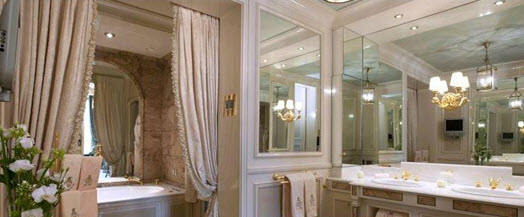
The answer is that, according to the MI6 file, Henri Paul was a person whom Dodi trusted and who could obtain cocaine and remain silent. In return, he was well rewarded.
Henri Paul was, in fact, a part-time recruited MI6 agent. Frenchmen are quite willing to work for Russian, American or Chinese and other secret service agencies, but rarely do so for the British. Henri Paul was recruited in 1995, and his role was simply to place intrusive surveillance devices in the properties owned by Mohamed Al-Fayed, which included the Ritz Hotel.
MI6 are always extremely interested in knowing all the latest gossip and details including extra-marital or same-sex relationships of the rich and famous. MI6, of course, came up trumps when Dodi and Diana started a relationship.
The Diana file at MI6 contains all sorts of idle gossip regarding the intimate details of their relationship, how much Dodi meant to Diana, whether they slept together all night and, more importantly, whether they had any thoughts about getting married.
Of course, none of the above in 1997 was truly a matter for the state, but the orders to ‘continue and pursue’ such came directly from the Head of State:- HM Queen Elizabeth.
One important factor in determining the events of August 1997, should be obvious. The fact so many high powered elements of MI6 were in Paris remains odd. Even spies take their holidays the same month as most to ensure they do not ‘give their profession away’.
The MI6 file on Henri Paul was relatively thin until the entries following July 1997. Prior to this, it contained only the room numbers and guests that were subject to being ‘bugged,’ normally via a small device at the back of a television set in the room. How many people check the back of a TV in a hotel room?
But this night Henri Paul wanted Dodi out of the Imperial Suite just as much as Dodi sought cocaine to steady his nerves.
The money found in cash in Henri Paul’s pocket, not his wallet, amounted to approximately £1,400 – more than sufficient to acquire the much needed white powder Dodi craved.
But Henri Paul was not only working for MI6 but also for the Direction Generale de la Securite Exterieure (DGSE), the MI6 counterpart. Each knew about the other. He also ‘freelanced’ on occasion if time permitted for the Directoire de la Securite du Territoire, the MI5 counterpart. All three parties were aware of the others.
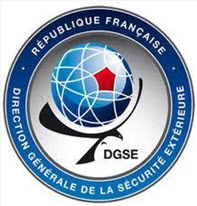
Unlike MI6, the DGSE had zero interest in the particulars between Dodi and Diana. A request from MI6 in July 1997 to the DGSE for certain information failed to even attract a reply.
The file maintained by both MI6 and the DGSE should, of course, have been made available to the French Inquest and certainly the English Enquiry. The MI6 file contains all of Henri Paul’s contacts and sheds some light on why so many MI6 officers were in Paris during the crucial days. The DGSE file would invariably hold similar information.
The French President, together with the Minister of the Interior, ensured three orders would be maintained sealing such under the strict French Presidential Security Directives:
- The Henri Paul file at the DGSE was not to be disclosed to the Investigating Magistrate
- The cocaine found in the wrecked Mercedes was hidden and the speed camera images were to disappear.
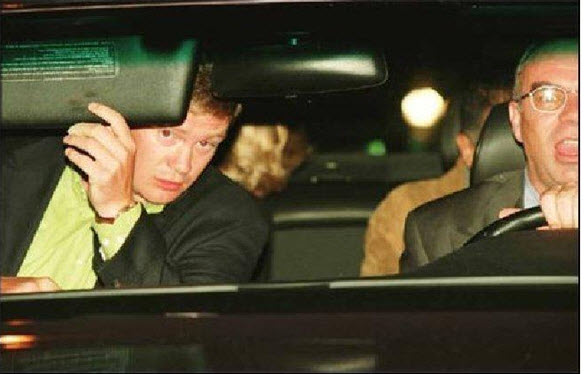
The last photographs show Diana’s head turned to avoid what seems the ‘Dazzling White Light.’ Trevor Rees-Jones had lowered the sun visor, his right hand raised as though to avoid bright sunlight – the reflection in the spectacles of Henri Paul clearly shows a dazzling light. Henri’s eyes look, wide, and stunned.
Paul Henry was born on 3rd July 1956 in Lorient, Southern Brittany. His father had been in the army and then worked for the local council. He was a more than reliable a student and graduated in maths and science. He was also a talented classical pianist. In 1976 he did his National service at Rochfort airbase, where he worked in the security department. He left the army as a commissioned officer.
Though single, Paul had lived with Laurence Pujol and her daughter, Samantha, for four years, until they moved out of his apartment in 1992. Contact was kept until April 1995. About drink, she said of Paul: “Wine made him joyful, he’d get very happy and do gags to make people laugh. Sometimes he would make you think he was really drunk when he wasn’t. He was a joker. He played around a lot, but never got incoherent on alcohol.”
At the time of his death, Paul was in a relationship with a woman, with whom he dined regularly. No one had ever met her nor had he introduced her to anybody. Two days after his death, a different, unknown, woman delivered the keys of his apartment to his parents. The day following the visit by this unknown woman, police searched Paul’s apartment and, amongst other possessions, found a supply of wine, beer, and a dozen bottles of spirits. They also found a gay guide to Paris, but that aspect was also suppressed, although noted by MI6. He did, however, live above a gay club, so that may well explain the guide. His favourite drinking haunt was a lesbian bar, yet he was heterosexual.
Both women worked for Mossad, to whom, Henri Paul on occasion would pass the odd tit-bit of information, but nothing of true importance.
In 1985, he started employment at the Ritz Hotel as a security officer. He held a private pilot’s license from 27 June 1976, instruments rated, with 605 hours logged. As a pilot, he was well-regarded by George Bielek, a flying instructor: “He was a good man. Now, we never had a problem with him and – he was a very serious and a quiet and er, he, he make you, his job very good in, in, in er, in flight. He was a good private pilot, serious, and er, he, he’s looking for progressing each time.” Those words are recorded in the MI6 file on Henri Paul.
Just two days before the accident he completed a rigorous medical to renew his flying license. The medical found no signs of alcoholism.
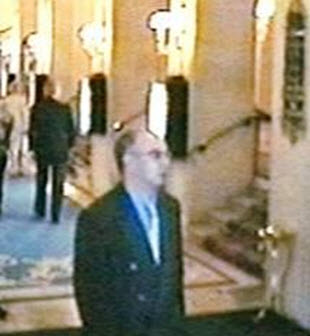
Henry Paul soon became deputy head of security at the Ritz, but two years later was overlooked as head of security by another employee. The reason he did not get the job was that he did not possess the necessary qualification required by the French Authorities for rental cars. He had ample experience, was trusted by Dodi and his father, but lacked a piece of paper necessary for his qualification.
He was in the group of people that spent Saturday afternoon August 30th 1997 at Le Bourget, and he drove the Range Rover carrying the luggage to Villa Windsor. The head of security at Villa Windsor was (Rue) Ben Murrell and he started the whispers that Henry Paul had been drinking.
Murrell told Rees Jones that Henry Paul had a ‘very good lunch.’ That may include a quarter litre of wine or half a litre of wine roughly, two-thirds of a bottle. But Henry Paul was back at the Ritz by 5 pm and no one noticed anything odd about him. He went off duty at 7.00 pm.
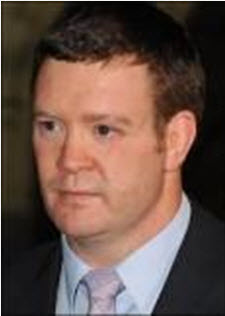
In France, if one dines alone for lunch, generally has a 250ml pitcher of wine. If one assumes, for the sake of argument, Henry Paul had more, a 500ml pitcher contains 6.50 units of alcohol.
Surveillance of Henry Paul shows he also drank two anisette which is between 20%/40% alcohol, depending on the brand. Two shots would provide one to two units of alcohol. The Ritz bar receipts (copies) are in the MI6 file show that they were ‘small shots’ of anisette. That would mean Henri Paul had anywhere from 6.50 to 9.75 at worst units of alcohol at 3 pm.
That would begin to metabolize immediately and once started one unit of alcohol would leave his bloodstream every hour. By midnight there would be only one unit of alcohol left in his body topped up by the anisette.
This would produce by far less than the 1.74 mg blood alcohol reading found in his body. Whisky was a favourite drink of Henri Paul. To produce the reading that supposedly was found at the time of death he would have had to drink eleven to twelve tumblers of whisky as well.
If Henry Paul started drinking at 7.00 pm when he went off duty, expecting to remain free that evening, then the reading would make sense.
Henri Paul left the Ritz Hotel at 7 pm and returned at 9.53 pm. In 173 minutes Henri Paul could not truly have gone far. MI6 surveillance shows that shortly after 7 pm he was seen at the ‘lesbian bar’ opposite his flat. Josie, the owner of the bar, was photographed waving to him.
He was also photographed in a nearby supermarket by MI6 officers, buying carrots, marmalade, lettuce, deodorant, and water.
If anything is certain it is that Henri Paul was certainly not drunk.
At the time of his death, Henri Paul had over 3 million French Francs equal to at the time some £300,000. He held 13 separate bank accounts two accounts in a bank outside Paris, three accounts and a safety deposit box at BNP in the Place Vendome, three bank accounts at Barclays on the avenue de l’Opera, one current and 4 deposit accounts at the Caisse d’Epargne, near the Louvre. In the 8 months before the crash, 40,000 francs was paid into a Caisse d’Epargne account on five occasions, each time in cash.
The rumour was circulated that this money (and especially the 40,000 Francs) came from the security services of various countries.

It is correct, that at the time of his death a notebook found on his person contained many numbers for people from the Directoire de la Securite du Territoire, and even remarkably the telephone number of the French President himself.
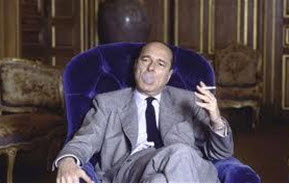
The money that was regularly paid into his bank account did not come from MI6 or the French security services. It did not come from Mossad who were controlling him and had ‘planted’ a girlfriend to be close to him.
The money came from Dodi Al-Fayed because Henri Paul regularly acquired a quantity of cocaine for his boss and kept quiet about it.
Until late 1983 if a body was returned to England for burial, the Coroner had an unfettered discretion as to whether or not an inquest should be held. The family of a nurse who fell to her death in Saudi Arabia would change all of that. The law clearly states that, if a British citizen dies abroad under mysterious circumstances, there has to be an inquest. The Coroner no longer holds any discretion.
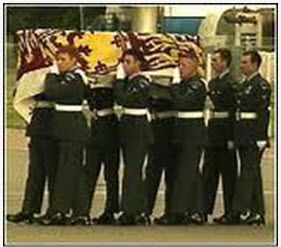
Princess Diana’s body arrives……
The bodies of Diana and Dodi arrived back on 31st August 1997. The Royal Coroner issued a statement four days later confirming that, in accordance with the law, there would be an inquest, and said it would be held in the normal time frame.
Dodi Al Fayed lived in Surrey, and the Surrey Coroner also said there would be an Inquest and within the time frame.
The inquest was opened only to be adjourned, and not held until January 2004 – some seven years later. A number of excuses were made. The first was that Mohamed Al-Fayed quite appropriately sought both inquests to be joined into a single inquest. He took the case to court and two years later lost. The second reason was that, since proceedings had been instituted in France, those had to be completed first.
The Coroners Act of 1988, does not insist that all other proceedings must be complete prior to an inquest commencing. The Act says, in fact, that an inquest should be held ‘as soon as practical.’ In 1997, both Coroners considered it ‘practical’ to hold an inquest quickly, but the MI6 files show that both Coroners were placed under pressure from HM Queen Elizabeth and Prince Philip to delay as long as possible.
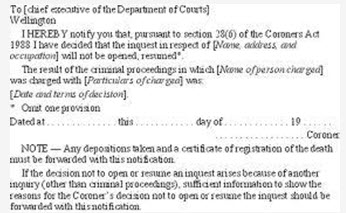
The only proceedings in France since 1999 were malpractice allegations regarding the autopsy of Henri Paul, and Al-Fayed, issued proceedings for an invasion of privacy – a case he lost in 2003 – but those had nothing to do with the deaths of Dodi and Diana.
The real reasons were that HM Queen Elizabeth, Prince Philip, and Prince Charles, were told that cocaine was found in the car. Prince Charles was told at once and he told his parents.
An inquest could not legitimately avoid evidence which shows that at least ‘one passenger had taken cocaine’ and had ‘some in their possession.’ It could avoid asking why the speed camera had suddenly stopped working and worse images ‘suppressed.’ It could not avoid asking why Dodi’s treasured mobile phone had disappeared and worse how that could have occurred.
Mohamed Al-Fayed also had an interest in ensuring the cocaine found in the car should not be revealed. There had been considerable press on Dodi and his relationship over the years with controlled substances.
It is interesting to note also the autopsy report on Dodi has never been made public. His mobile phone has never resurfaced. It sits in a vault at Fort Monkton, at the eastern end of Stokes Bay, Gosport, Hampshire – an MI6 stronghold.
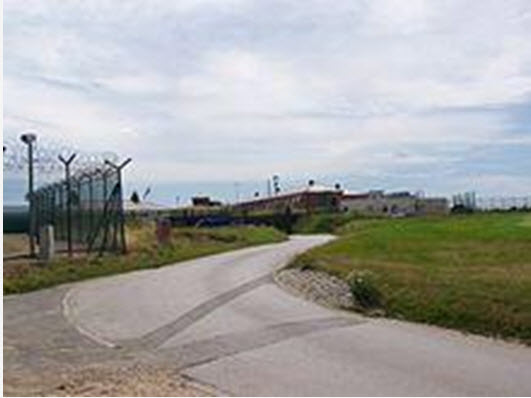
HM The Queen and Prince Philip, according to the MI6 file took the decision to protect Prince William and Prince Harry.’ Had Diana been involved with controlled substances during her lifetime, there is no doubt that Prince Charles would have used that against her in the media war. Prince Philip never believed his son received fair press but he also could not understand why Charles would want to leave Diana for Camilla.
The advice given to the Royal Family was ‘not to try and tarnish the reputation of Princess Diana now she is not here to defend herself.’
The French Government and authorities, once they took the decision to suppress the finding of cocaine in the car and, in the pocket of Henri Paul and, suppressing the speed camera, removing Dodi’s mobile phone and handing it to an MI6 officer, could not afford to change the story.
Whilst Mohamed Al-Fayed flew to Paris at once, and upon arrival was photographed by MI6 officers showing he was not wearing his seatbelt, Prince Charles did not.
At 11 o’clock he went to church in Craithie, with the rest of the Royal Family. MI5 agents were there recording everything.
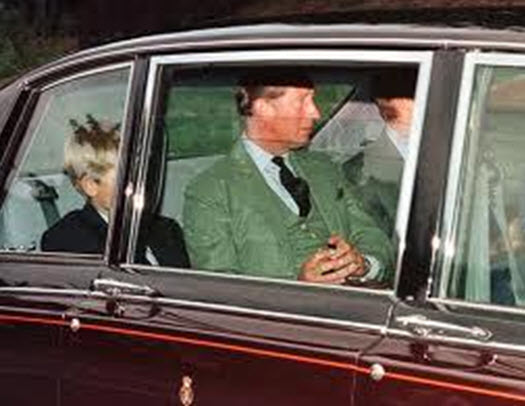
For six days, the Royal Family remained in Scotland, almost causing a constitutional crisis. It was in fact Sir David Spedding, the Director-General of MI6, who convinced HM to return to London.
The callousness of the Royal Family can be found in a memo from an MI6 officer in Paris watching the news, writing to David Spedding with the words, ‘Are they for real? W & H attending services with their mother dead? Unreal.’
The Queen Mother had an idea of secretly moving Diana’s body in the middle of the night. Balmoral is not exempt from NSA intercepts of which ‘some’ are redirected to MI6. The transcripts in the MI6 file show that Charles was more than forceful, even shouting at one stage, that he would bring the body of Diana back with full honours and draped in the colours of the Prince of Wales.
At 1 pm Paul Burrell arrived in Paris. He was under constant surveillance from no less than three secret service agencies.
Prince Charles arrived at 5 pm, together with Diana’s sisters. He was greeted by President Chirac.
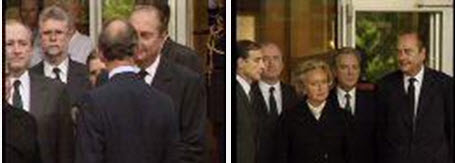
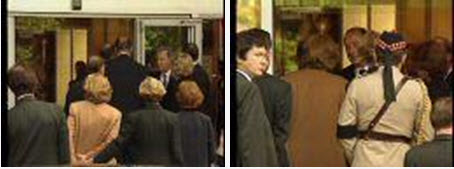
Charles asked to be alone with the body for a few minutes and he was obliged. When he came out, amongst the crowd was an MI6 officer who reported: “It was obvious he (Charles) had been crying.”
He then went to meet the doctors to thank them for all they had done. It was then that the MI6 officer reported Charles said something quite strange.
Charles looked at Dr Riou and Dr Pavie and exclaimed “Felicitations.”
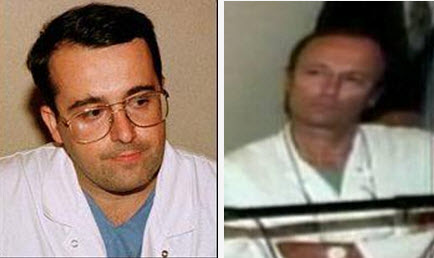
Translated into English it means ‘congratulations.’ The doctors looked surprised that he should utter such a phrase. A note in the MI6 file by a psychologist puts this phrase down to “stress breaking through the subconscious mind. Having cried, seeing his wife dead, he was not thinking but feeling, and those feelings were feelings of truth”.
The doctors, having failed to help Diana live, made his most secret wishes come true and he was now free to love the woman he had always loved. The note continues: “This is not to say Charles either wanted or planned the death of Diana, but that word shows he was torn between two feelings. He was in tears, her death was tragic but he had to say something, and out came the result.”
The decision was taken by Spedding the Director-General to erase media coverage of the word Charles uttered.
Before Charles and his entourage left since security was ad hoc, the British waited for the French to leave and the French for the British. Charles sat in the car for three minutes before a woman came out of the hospital with a carrier bag. Inside were the clothes Diana was wearing the night she died.
The MI6 report noted ‘clothes taken from B (Burrell) to be burnt.’
There has been much speculation about the Mercedes S280. One of the less known facts is that the car was stolen only in April that year outside the Taillevent restaurant in Paris.
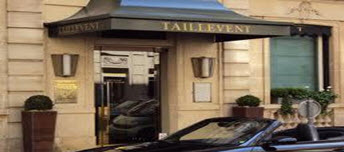
The Etoile Limousine Company was the owner of the vehicle and was a subsidiary company of the Ritz Hotel. When the police recovered the car, its electronics and braking system had been ripped out. These individually have little value, but nonetheless, the car company sent the vehicle for repair.
Of course, no-one wanting to sabotage the vehicle could be certain that Dodi and Diana would ever use it. One could tamper with the vehicle and the security services do indeed have a specialist department that covers auto, air and marine intrusive manipulation. One could easily have used the theft of the vehicle (which was not widely if at all reported) the installation of new electronics and braking system and set up new commands that would respond to the remote control.
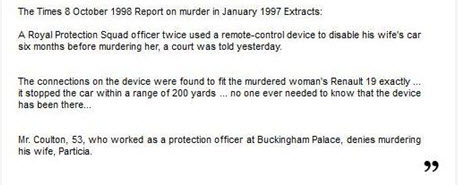
Only eight months previously, a Royal Protection Officer had murdered his wife in similar circumstances. It was not reported until more than a year after the death of Diana.
MI6 technicians developed a ‘chip’ which starts to operate only when a pre-set command is sent on a particular frequency and then when the chip is activated the driver no longer has control.
There was no such chip ‘found’ upon the examination of the vehicle but it is interesting that the Investigative Judge ordered an extensive search and analysis. If it was found it was not noted.
Late on 30th August 1997, once Dodi had decided to leave the Ritz Hotel and move to his apartment and, insisting on Henri Paul as the driver and, only one bodyguard, it was solely in order as a decoy for Diana so she would not be aware of his need for cocaine.
Whatever can be said about Diana she was more than a caring mother. Her relationship with Dr Hasnat Khan had ended because MI6 had ‘briefed’ her about his ‘occasional use for recreational purposes of a controlled substance.’
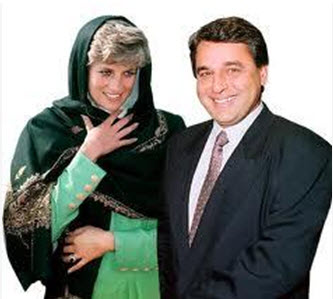
Diana was mortified but did not want her children even remotely exposed to anyone that held any connection with drugs.
She was aware that Dodi had ‘in the past dabbled’ but was certain he no longer took cocaine. At 11.30 pm on the 30th August 1997, the Ritz Hotel asked Etoile Limousine to provide a second Mercedes that would act as a kind of decoy.
This car was delivered to the Ritz by a driver known as Frederic Lucard. After 11.30 pm Henri Paul walked out of the Ritz Hotel five times to tell journalists and photographers to ‘get their cameras ready.’
But Henri Paul was not only there for that purpose. He had arranged to meet a person who would be amongst the crowd and supply him with a small quantity of cocaine in a small plastic pouch.

The Mercedes Dodi and Diana were going to use had tinted windows. The second car had clear windows. Originally the plan for delivery of the small quantity of cocaine had been that Henri Paul, with Dodi and Diana and one body-guard, would meet the person, thus the need for tinted windows so the dealer would not necessarily recognise Dodi or Diana. That changed when Henri Paul arranged for the dealer to ‘mix with the paparazzi’.
It was strange for the Ritz security that Dodi asked Henri Paul to drive when his driver was available, and for only one bodyguard. Dodi had originally wanted to take delivery of the cocaine and for that, he needed someone he could trust. He certainly could trust Henri Paul who had been buying drugs for him for some time. Henri Paul would never have told Mohamed Al-Fayed.
Trevor Rees-Jones was a junior security officer. With the original plan, he would not have raised any questions making a small detour. The more senior bodyguard, Kez Wingfield, would be driving the decoy car.
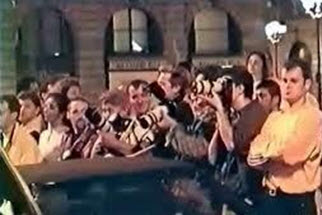
Diana is noted as not being nervous at all of the crowd of journalists. Two Australian ‘tourists,’ Chloe Papazahariakis and Vlad Borovac, filmed Diana with the crowd of journalists that seemed polite.
At 12.14 am on 31st August 1997, surveillance notes Diana leaving at the back entrance of the Ritz Hotel.
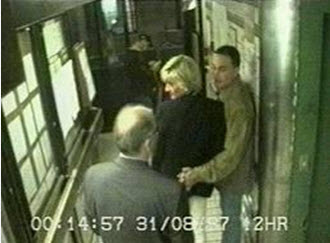
At 12.18 am Diana leaves through the back entrance with Henri Paul and Trevor Rees-Jones.
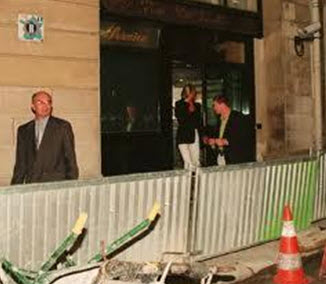
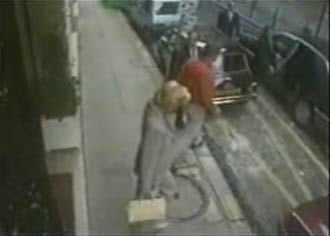
Henri Paul disappears for about a minute and then returns to Dodi, whispers something which Diana believes to be the plan but which NSA intercepts record as ‘Je l’ai’ meaning ‘I have it.’
At 12.19 am video surveillance shows Henri Paul leading the couple and Trevor Rees-Jones down rue Cambon at the back of the hotel, with the second Mercedes waiting.
Diana and Dodi got into the back of the car. They did not put on their safety belts, neither did Henri Paul. After a few seconds, Trevor Rees-Jones did.
Rue Cambon is a narrow street with a traffic light about one hundred metres from the Ritz Hotel.
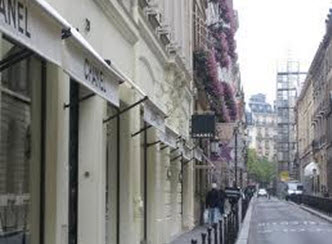
Another set of lights can be found at the bottom of the street. There the Mercedes is noted in the MI6 file as having ‘turned sharp right into rue de Rivoli.’
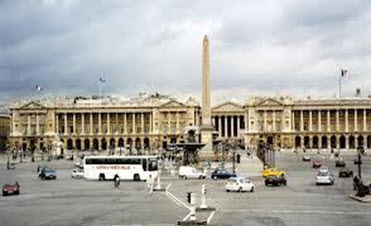
The shortest route to Dodi’s apartment was along the Champ-Elysees, but at the Place de la Concorde the car turned left instead of right. It then sped along the riverbank of the Seine and going “well away from MDAF {Mr Dodi Al Fayed} flat” according to the MI6 log.
A few moments after the Mercedes drove away, the Ritz cameras trained on rue Cambon showed the last few frames of a white Fiat Uno disappearing down the street.
At 12.23 am Henry Paul reached the dip that curves right and leads to the Alma Tunnel. Why Henri Paul chose that route has remained a mystery but the answer, as always, is found within the NSA intercepts even of a travelling vehicle.
Dodi and Diana were simply having a good time. If one looks at the last photo taken obviously by a flash and a frontal flash one can see clearly the faces. The driver Henri Paul looks normal and in fact, is smiling. Trevor Rees-Jones is the only one that looks tense, maybe even a little afraid. Trevor Rees-Jones is telling Henri Paul to slow down but, in the back of the car, Dodi and Diana are heard ‘laughing and joking’ and happy.
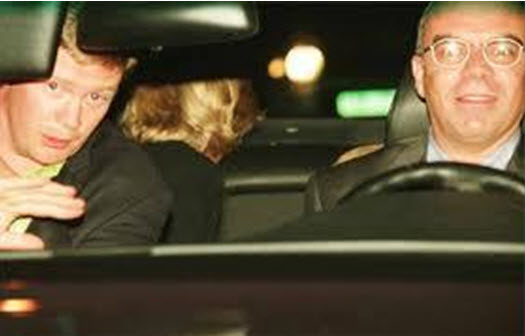
On his own initiative Henri Paul, realising that Dodi and Diana were having fun, took the longer route allowing them time to continue having fun.
The suggestion that Dodi and Diana were in a state of panic is simply not consistent with the NSA intercepts contained within the MI6 file.
The flash that is evident is not the flash from a photographer but from the speed-camera that mysteriously disappeared. The car was speeding and the flash activated. President Chirac was aware of this and did not want the death of Diana blamed on the French government, thus the immediate orders for the camera to ‘marcher’ or ‘walk.’
The problems the French government faced were the distortion of the truth. The first comment to the media involved the speed-camera that was not working. Once they stated that, there was no turning back. On 15th September 1997, a man who was driving only 12 minutes previous down the Alma Tunnel received a speeding ticket in the post.
The police saw the photograph by midday 31st August 1997, but a decision was taken to deny the existence of such with the approval of MI6.
The traffic police found in the car a mobile phone and a small bag of cocaine in Diana’s handbag. Whilst Dodi had been playing around with her laughing and joking, he had placed the small bag in her bag hoping to retrieve it later. Intelligence sources showed that Diana often asked Dodi to empty his pockets in a joking way, but it was the manner upon which she could be sure he did not use drugs.
Once the passengers were identified, the DGSE was notified, who in turn called upon MI6. A decision was taken immediately by Sir David Spedding and the French President himself that this information was not to be leaked.
The fact Diana was inadvertently carrying a small quantity of cocaine could easily have been used by the Royal Family against her. To prove that she was an innocent bystander would require the NSA and GCHQ who regularly ‘spied’ on her to confirm certain intercepts.
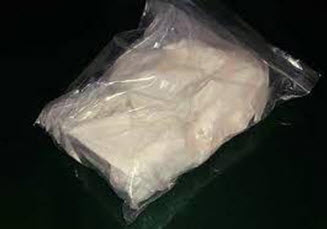
HM, The Queen was no supporter of Diana and disliked her by far more than Prince Philip. In the early hours of the morning MI6 top agents were hard at work, David Spedding particularly. The Queen’s insistence on not returning to London was based entirely upon the information that cocaine had been found in Diana’s bag. Whichever way one would look at the whole saga HM The Queen felt “she (Diana) would turn it to her favour.”
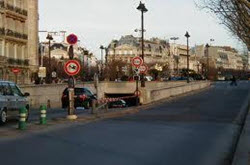

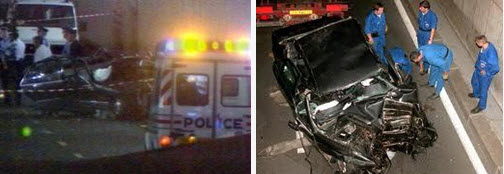
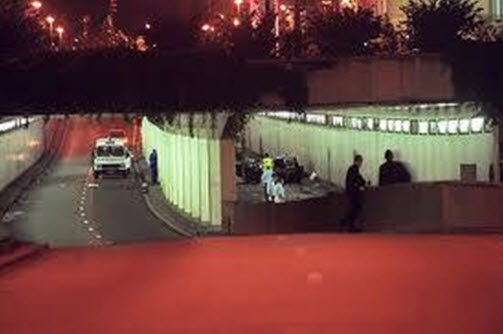
Henri Paul was not drunk.
The car did not skid.
No bolt was fired at the vehicle.
The Mercedes bearing Princess Diana, Dodi Fayed, their driver and bodyguard crashed into a concrete pillar in the Alma tunnel. Henri Paul and Dodi were killed instantly. The bodyguard, sitting in the front right seat, suffered severe facial injuries and a broken wrist but was saved largely thanks to his seat belt and airbag. Princess Diana was not wearing a seat belt, also survived the initial crash but suffered major thoracic trauma, in addition to several superficial cuts on the forehand, arm and thigh and a dislocated shoulder. The first witnesses on the scene found her sitting on the floor with her legs on the backseat and her head wedged between the backs of the two front seats. Her eyes were open and she mumbled several indistinct phrases. The bodyguard later said he remembered hearing her call out Dodi Fayed’s name. Other heard her murmur: “My God.”
Given the nature of the shock, a frontal crash into an immobile object at the speed of 100 km/hr or more, there was a strong probability of a deceleration injury resulting in possible internal lesions. Yet none of the medical personnel who initially treated her in the tunnel appears to have suspected internal haemorrhaging. Instead, they spent nearly an hour doing onsite treatment of a symptom – falling blood pressure – rather than treating its cause – an internal lesion.
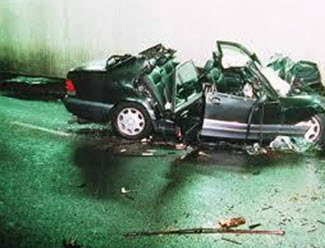
The first doctor on the scene was a physician with the private medical service SOS Medicins. He happened to be driving through the tunnel in the eastbound lane within a minute of the accident. He stopped his car and went to attend to the passengers of the crashed Mercedes. He immediately observed that Fayed and a driver were dead. The front seat passenger was already being attended to by an off-duty fireman, who also happened to be on the scene. So he turned his attention to the blonde woman in the rear, whose identity was not immediately apparent to him. His first impression, as he later told an interviewer, was that the woman was not in a hopeless condition, and had a chance to survive. He admitted, however, that he did not know about her internal problems.
Without his equipment, there was little he could do except to place her head in a position that made it easier to breathe and to administer an oxygen mask. He also used a portable telephone to call the emergency medical service, describe the location of the accident and the nature of the injuries. Other passers-by had also called for help within a minute of the crash.
The first unit of the Sapeurs-Pompiers, a military emergency service, arrived within seven minutes and began to administer treatment. At 12:40 a.m., 15 minutes after the accident, the first SAMU ambulance arrived with its onboard physician. In a deposition given later to French investigators, the physician said Diana was agitated, crying out, and did not seem to understand everything he said to reassure her. He added that she repeatedly moved her left arm and right leg. He immediately started an IV drip.
Though she was apparently conscious when the SAMU arrived, he reported that Diana suffered a cardiac arrest while he and his assistants where extracting her from the car. At that point, he said, he intubated the patient, put her on a respirator and performed an external chest massage to re-establish a cardiac rhythm. He then installed her in the SAMU ambulance, known as a ‘mobile hospital unit’ because it is so well equipped, and proceeded to carry out the more detailed examination and treatment.
Clearly, Diana was in serious condition, and the fact that she suffered a cardiac arrest obliged doctors to take emergency measures on-site. The question is: did they spent too long treating her on-site and driving her to the hospital, given that she was haemorrhaging and could only be saved by operating to repair her internal injuries?
The SAMU team spent nearly an hour until 1:30 am treating Diana in the tunnel. Then the ambulance drove her at a snail’s pace to Piete-Salpetriere hospital, 6.15 kilometres away. At that time of night, it would normally take five or 10 minutes to drive along the riverfront expressway. But Diana’s driver, applying standard French emergency procedures, drove extremely slowly so as not to subject the fragile patient to shocks and bumps. As a result, it took them some 40 minutes to make the drive, and the ambulance stopped within a few hundred yards of the hospital to treat a sharp drop in blood pressure.
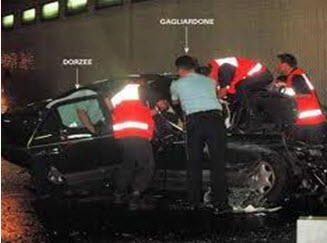
According to the testimony of the chief surgeon on duty that night, the operation revealed that the source of the haemorrhaging was a single lesion, which he described as a partial rupture of the left pulmonary vein at the point of contact with the left atrium. The tear was sutured and the haemorrhaging was stopped. But despite nearly two hours of manual internal massage, and the application of electroshocks, it was impossible to re-establish a heartbeat. The patient was declared dead at 4 am.
At a press conference one hour later, the doctors read a five-sentence communiqué that cited an important wound in the left pulmonary vein as the source of the internal bleeding that killed her. The communiqué made no specific mention of other lesions. Nor did the French coroner’s report, which listed the cause of death as internal haemorrhaging due to major chest trauma and a phenomenon of deceleration which caused a rupture of the left pulmonary vein.
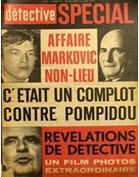
From subsequent medical testimony given to French investigators, it is clear that there were no other significant lesions. This flatly contradicts the assertion, made by the French Health Minister and other officials, that Diana suffered multiple internal injuries that left her no chance of survival. This self-serving claim is simply not supported by the facts.
All in all three people died that night. Only Trevor Rees-Jones survived. The state always seeks to protect itself. In 1968, the Serbian driver/bodyguard of famous film actor Alain Delon was killed when he was going to ‘blow the whistle’ on sexual scandals involving show business personalities and the then President of the Republic, George Pompidou. Stevan Markovic was found dead on the outskirts of Paris. The Markovic Affair still haunts the French Government.
There are some similarities between the death of Diana and Princess Grace of Monaco. In September 1982 Grace Kelly was 52 years of age. She had gained a little weight but for the first time since High Society in 1956 that she made a film. She was hoping to convince her husband, Prince Rainier of Monaco, to allow her back on the big screen.
On 13th September 1982, whilst driving with her daughter Stephanie to Monaco from their home in Roc Agel on the French side of the border, Princess Grace ‘suffered a stroke,’ which caused her to drive her Rover P6 off the serpentine road down a mountainside. Grace was pulled alive from the wreckage, but had suffered serious injuries and was unconscious but died the following day at the Monaco Hospital. Stephanie suffered only minor bruising, although it later emerged that she had suffered a serious cervical fracture.
Reports say that Monaco Hospital (later renamed Centre Hospitalier Princesse Grace – Princess Grace Hospital Centre), where the injured survivors were taken, was not well equipped for these type injuries. Surgery was performed on Grace’s lungs to stop the internal bleeding. Her other injuries included multiple fractures of the collar bone, thigh, and ribs. A CAT scan supposedly revealed that shortly before the accident, Grace had suffered a stroke which rendered her unable to control the vehicle. This of course was strange because at the time there was no CAT scan machine at the Monaco Hospital. Fearing that the Princess may survive as a helpless invalid, the royal palace attempted a cover-up of the extent of her injuries.
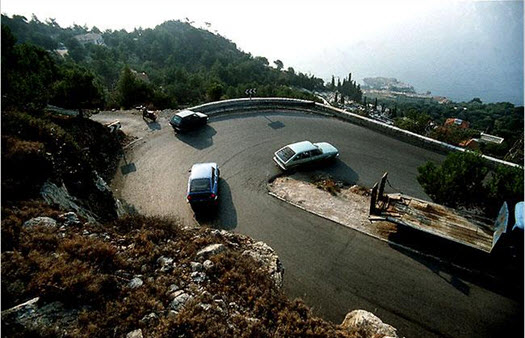
Grace Kelly made all the headlines and there was the usual speculation as to the cause of the accident. Some said Stephanie was driving and that there had been an argument because Stephanie was involved with yet another unsuitable man.
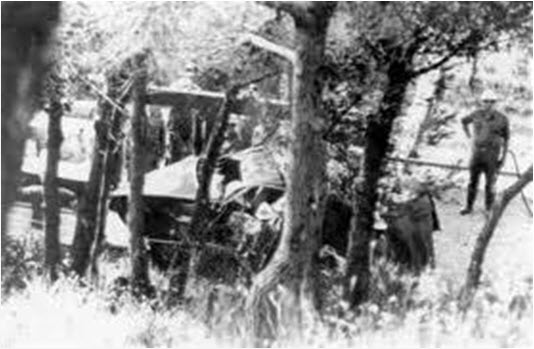
There are remarkable few photos of the wreckage but comparing both the vehicle which Princess Grace died and Princess Diana there are similarities.
What is known is that MI6 had planted a bug in the Rover P6. It was a favour for Prince Rainier who was deeply suspicious of his wife. Although MI6 had indeed planted a bug Rainier had ordered a ‘trusted person within his employ’ to place a small device that could release a toxin when triggered from a distance. The toxin would produce blurred vision and loss of the motor’s control.
The official explanation given was that Princess Grace had a very sudden stroke but Princess Stephanie remembers only that her mother lost control suddenly.
The wreckage of the car landed on the property of a close friend of Prince Rainier. Since it was on French land it would be the French Government that had control of the accident scene.

An MI6 officer was in Monte Carlo at the time staying at the Metropole Hotel. He reported back to Colin Figures the then head of the Security Services that ‘The French ordered no-one to attend the site for at least two hours.’ Dick Franks, Director General the outgoing Director of MI6 was also in Monte Carlo staying at the Metropole Hotel. He had retired and was enjoying what he thought was a break from it all. The MI6 agent asked Franks if they should take matters further but the Rugby School educated Franks told him to ‘let sleeping dogs lie.’
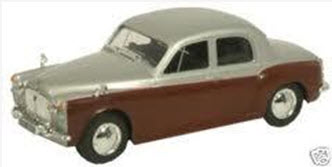
The car that was photographed killing Princess Grace was not the Rover P60 she was driving. The message from Dick Franks to the MI6 agent in Monaco that day was clear.
At 10:30 pm on 14th September 1982, Princess Grace was taken off her life-support equipment on the orders of Prince Rainier, effectively condemning her to death. In this matter, silence was required and eternal silence for Princess Grace who for years had enjoyed numerous affairs with David Niven and Frank Sinatra.
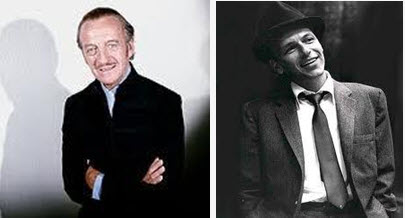
Like Diana, all of Monaco was sad when Grace Kelly died, but relieved that a potential problem would not affect the country.
Henri Paul was not drunk that night. He lived above a gay bar and surveillance showed him to have ‘homosexual tendencies.’ There is a suggestion contained in the MI6 file that he was ‘bisexual’, but this is not emphasized.
The mystery surrounding the death of Diana is similar to that of Princess Stephanie. The target was not Diana that evening. Princess Stephanie survived, Diana did not.
Henri Paul fell in love with a Mossad ‘agent’ although he certainly was not aware she was working for the Israeli killer agency. Many had seen him with a beautiful woman but, upon his death, it was another woman that handed the keys back to his apartment.
Melinda was a 38-year-old transvestite working for Mossad. On 30th August 1997 at 7.00 pm, when Henry Paul went off duty, he was seen at a supermarket and recorded by MI6 logs, and he went for a drink at a gay bar. The rest of the time he was under intrusive surveillance by MI6 and presumably also Mossad. He was with Melinda and they were seen flirting and kissing.
This was the moment that the order from Mossad came for Melinda to plant a tiny pin-like device on his clothes without him being aware. The video from the Ritz Hotel shows Henri Paul parking his car at 9.53 pm but entering the Ritz Hotel at 10.08 pm. For fifteen minutes his time is unaccounted for, save that MI6 had him under surveillance and he was in his car with Melinda. After Henri Paul entered the Ritz Hotel, the Mossad agent Melinda left the car park at 10.15 pm, never to be seen again.
The pin-like device Henri Paul had clasped on his clothes was carrying a bubble-head with a small amount of nerve agent VX. It is one of the deadliest chemical agents known. It was developed by MI6 scientists at Porton Down Chemical Weapons Research Centre.
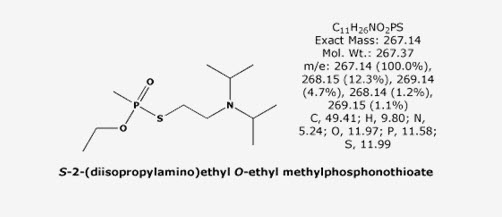
It wreaks havoc with the way brain cells communicate by impairing the synapses. If brain cells do not work or communicate then one loses the ability to perceive and to act.
Once Henri Paul had been allocated to drive Dodi, the Mossad plan was simple. Melinda would hug Henri Paul and fix the pin with the VX on his clothes. He would not even be aware of it. That is what Melinda did and in the car at 9.55 pm told him she would meet him later.
All Mossad had to do was to postmen in various locations and at the right time trigger the device. The VX made Henri Paul lose control.
There are a number of reports of who saw what at the Alma Tunnel.

MI6 did not murder Diana or Dodi directly. On 3rd September 1997, the MI6 Director-General had scheduled a meeting with HM The Queen to deliver the files of intelligence on the Al Fayed family and Princess Diana.
The MI6 covert agent in Paris in 1997, was the same agent that had been in Monaco in 1982 dealing with the aftermath of Princes Grace and was more than experienced in covert surveillance. He was also the very same that was sent to Serbia to cover the botched-up assassination plan of Serbian President Milosevic. He was the most experienced operator in the field and knew all the players.
The mission between 27th August 1997 and 3rd September 1997 was to forewarn Princess Diana of the ‘regular and consistent drug use of Dodi Al Fayed’ and the ‘real risks of exposure of such a person to Prince William and Harry.’ Princess Diana was to be warned about the perils of mixing with such a person and told that on 3rd September 1997 the files containing information would be delivered to HM The Queen.
It would then be left to Diana to decide what to do, but since she had hastily abandoned Dr Hasnat Khan to whom she was by far more attached than Dodi on the pure mention of ‘occasional recreational drug use’, MI6 was sure Diana would return to London leaving Dodi and the Al Fayed family forever.
The MI6 agent arrived in Paris on 27th August 1997 and checked into the Ritz Hotel. He had befriended Mohamed Al Fayed and had been married for a short period of time in 1989 to a ‘Diana look-alike’ who had previously dated Dodi. The agent was thus aware first hand that Dodi was a regular user of cocaine.
MI6 had their agent right on the scene to perform the delicate task of telling Princess Diana the truth about Dodi, from first-hand experience. The agent was also known to Diana from a film screening that they had attended, but she was not aware he was a top MI6 agent. She would surely believe what he had to say and ditch Dodi Al-Fayed.

But on 30th August 1997 the agent, somewhat unusually, asked to leave Paris for one day, returning on 1st September, because 31st August was his wife’s birthday and he wanted to be at home with her. Although he had seen Diana arrive at the Ritz and saw Dodi leave to the Repossi shop he never had an opportunity of approaching her. He decided that it would be best to deal with the approach on Monday, 1st September. The decision to leave Paris in the evening was made and approval granted.
Under normal circumstances, no approval would be required, since, the MI6 agent was one of the top ones, and had been with MI6 since 1972. The agent returned home just before midnight to celebrate his wife’s birthday, only to find that at 3.00 am his telephone was ringing, constantly.
It was the message that told the agent Diana was dead, together with Dodi and Henri Paul. Mossad had not meant to harm Diana, they cared nothing for Rees Jones or Henri Paul, but Diana was not a target.
The last words Melinda whispered to Henri Paul was ‘Drive slowly, drive carefully.’ Henri Paul was not the target and may have survived had he applied his safety belt.
Dodi was targeted by Mossad simply because he was an Arab and they did not want him mixing with Princess Diana. It was a long-term vision that cost the life of a Princess. Mossad feared Dodi may marry Diana and when William became King, would influence his attitude towards Israel.
In the three days between 27th August 1997 and 31st, August 1997 Mossad accumulated 256 pages of intelligence on the movements of Dodi. It was an operation that had been planned for months.
It was not about business or drug use but safeguarding the future.
Throughout his life, Emad El-Din Mohamed Abdel Moneim Fayed, better known as Dodi, never once gave an interview to the press.

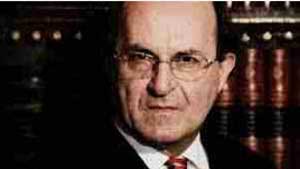
© 2012 Giovanni Di Stefano all rights reserved
NB: Some images retrieved from Google, will remove at owner’s request.
